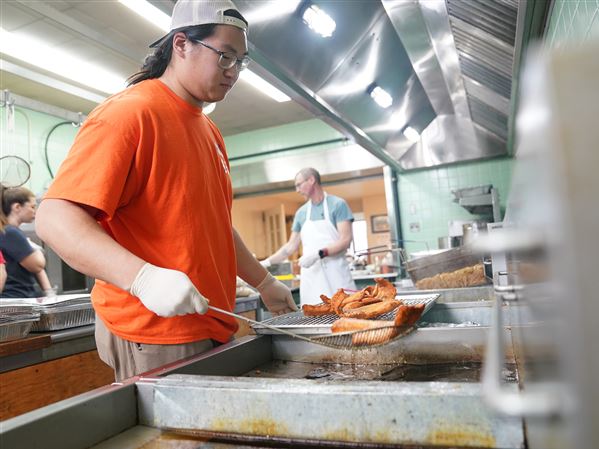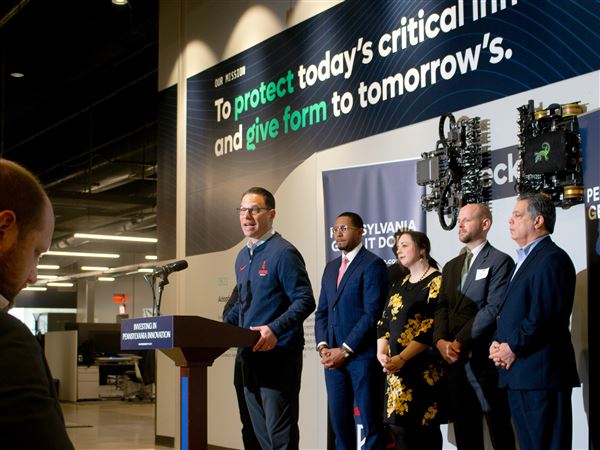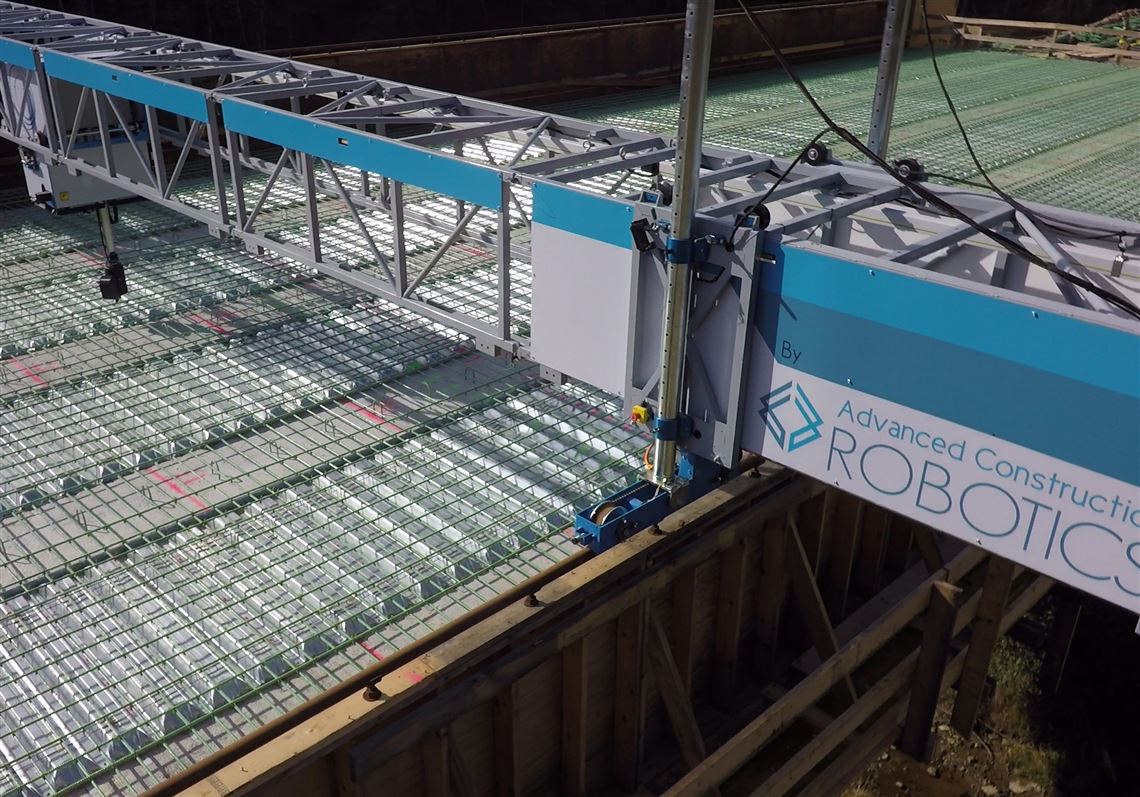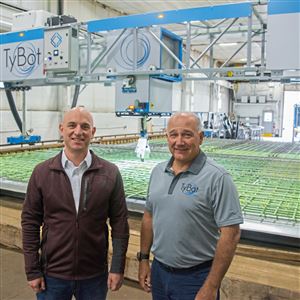Two years ago, Steve Muck attended a meeting at Carnegie Mellon University to discuss how robots could help the manufacturing and construction industries.
As CEO and chairman of Brayman Construction Corp. of Saxonburg, Mr. Muck centered his thoughts on one activity: tying rebar, the monotonous, back-breaking task where crews tie wires around each intersection to stabilize a frame of reinforcement bars before they are covered with concrete to form a bridge deck.
Every summer, Mr. Muck said, contractors struggle to find enough laborers for that work, which often is done by the same crew moving from one project to another. That slows down construction and occasionally delays a project, he said.
Fast-forward two years and now Mr. Muck has teamed with Jeremy Searock, former technical program manager at CMU’s National Robotics Engineering Center, to create Advanced Construction Robotics Inc. The Hampton company has tested and is ready to go to market with its first product, an autonomous robot called Tybot that can tie rebar with only one worker supervising the operation.
Tybot works on a frame that can expand as much as 140 feet across the width of a bridge. The robotic arm hovers over each rebar intersection and ties the rebars together, a process that the company estimates could cut labor hours in half.
In addition, Mr. Muck said, the new product can reduce construction injuries that can occur as laborers straddle the rebar frames and bend over to tie intersections.
“This was the problem that was at the forefront of my mind,” Mr. Muck said. “The process of finding workers has become more and more difficult in the last 10 years.”
How much work is involved in laying and tying rebar? When Brayman built the new Hulton Bridge between Oakmont and Harmar in 2015, it took a crew of eight to 10 workers about 7,400 man hours from April to September to lay 113,000 square feet of rebar and tie just over 2 million joints where rebars intersected.
A typical laborer earns about $26 an hour plus about $21 an hour in benefits.
“[Tybot] both speeds up the work and reduces the number of people to do it,” Mr. Muck said. “This is the construction industry looking to the robotics industry for a solution to a business problem.”
Typically, crews work on about 100 feet of rebar during the day, and Tybot can be used to tie the intersections at night or other times when crews are doing other work.
Mr. Searock described Tybot this way:
“This is a very boring robot that has great application and profitability.”
Brayman recently demonstrated Tybot as part of the construction of a bridge on Freedom Road in Beaver County. Jim Foringer, acting executive for the Pennsylvania Department of Transportation’s District 11, said the system shows promise and that the agency is familiar with other technological advances, including tools that measure the compaction of concrete.
“A lot of this will take the human error and human judgment out of the work,” he said. “The more efficient a contractor can be, that can only benefit the agency.”
The company wouldn’t discuss the cost of Tybot, but Mr. Muck said it would be “in the sweet spot” to make it financially beneficial for contractors to use it.
The robotics company is working through another Brayman spinoff, Grouse Ridge Capital, to finance the project and it expects to begin selling Tybots next spring through another subsidiary, Tybots LLC. The goal is to license the product to another manufacturer in the future.
“We don’t really want to develop and manufacture robots on a commercial basis,” Mr. Muck said.
Ed Blazina: eblazina@post-gazette.com, 412-263-1470 or on Twitter @EdBlazina.
First Published: October 30, 2017, 10:30 a.m.


















